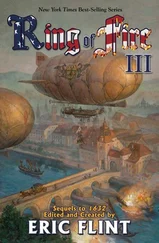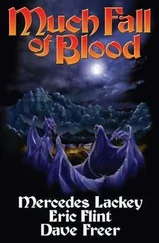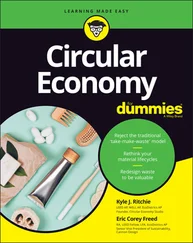Eric Chevillard - Palafox
Здесь есть возможность читать онлайн «Eric Chevillard - Palafox» весь текст электронной книги совершенно бесплатно (целиком полную версию без сокращений). В некоторых случаях можно слушать аудио, скачать через торрент в формате fb2 и присутствует краткое содержание. Год выпуска: 2004, Издательство: Archipelago Books, Жанр: Современная проза, на английском языке. Описание произведения, (предисловие) а так же отзывы посетителей доступны на портале библиотеки ЛибКат.
- Название:Palafox
- Автор:
- Издательство:Archipelago Books
- Жанр:
- Год:2004
- ISBN:нет данных
- Рейтинг книги:3 / 5. Голосов: 1
-
Избранное:Добавить в избранное
- Отзывы:
-
Ваша оценка:
- 60
- 1
- 2
- 3
- 4
- 5
Palafox: краткое содержание, описание и аннотация
Предлагаем к чтению аннотацию, описание, краткое содержание или предисловие (зависит от того, что написал сам автор книги «Palafox»). Если вы не нашли необходимую информацию о книге — напишите в комментариях, мы постараемся отыскать её.
Palafox — читать онлайн бесплатно полную книгу (весь текст) целиком
Ниже представлен текст книги, разбитый по страницам. Система сохранения места последней прочитанной страницы, позволяет с удобством читать онлайн бесплатно книгу «Palafox», без необходимости каждый раз заново искать на чём Вы остановились. Поставьте закладку, и сможете в любой момент перейти на страницу, на которой закончили чтение.
Интервал:
Закладка:
As you have already noted, a great many of the rock paintings (blood and ash, brown ochre) dated to the middle-Magdalenian era, represent a humped quadruped, with back-curving horns, of which the curved neckline of wooly fur recalls that belonging to Palafox. Let us not rush to conclude the image is in fact of him. Drawn in the shadowy discomfort of a rocky wall, these approximate figures, clumsy, frequently unfinished, suggest a great many other animals, such as the bison. Above all, what do we know of the artistic conceptions of the troglodytic painters? Why, for example, wouldn’t they have left their imaginations run free and invent this ruminant from scratch? Let us not expect an answer from Baruglio. These men and their rituals have become foreign to us. The generation gap — widened and flooded in zoos to keep monkeys or Lemuroid from sneaking into the company of visitors — this famous trench seems deeper still, and more unbridgeable, which keeps us from the carcasses and other fine remains of our direct ancestors. All one need do is show their gently prognathous skulls to a contemporary to judge, and listen as their laughter overflows.
Now immobilized, head held low, masticating hay, Palafox seems indifferent to everything said around him. He makes no move to exculpate himself. In fact, he conducts himself as if he were convinced of the inutility of the least effort, as if the executioner had already hoisted his cleaver, lowered it, and was now walking away at dawn in search of other thrilling adventures, other unbalanced encounters, other temporary liaisons. It is true, once again, that everything points to him, his ferocity, his omnivorousness, his claws sharper than canines, his canines like sabers, his coat clotted with blood. Scientifically, declaims Pierpont in staccato syllables (he polishes each and joins one carefully to the next), we must prove sci-en-tif-i-cal-ly the innocence or the guilt of Palafox and therefore, in the first place, go back and consider the entirety of his life, search backward for the moment of his birth. We can do this. The lengths of his tusks, the wear and tear on his hooves, his song, the position of his ears at rest, the suppleness of his spine, the size and number of his tines and antlers, we have enough information to succeed. But would it not be faster to have recourse to the techniques commonly utilized to date relics? Zeiger envisions for example the partial dissolution or perhaps irradiation of Palafox. Thanks to this last method, the historian knows instantly where, in which Greek or Inca dresser, to arrange the exhumed plate with a fistful of gold pieces — an archeological discovery then, but also a fine symbol of an earth at once nurturing and nurtured, let it be noted. There are many other methods of dating more or less along the lines of those already mentioned. Push a fisherman into the water and count the circles that expand around the place he fell, you will learn the age of the river.
Or the age of the fisherman, opinions differ on this point, but at root this changes nothing for us, proclaims Baruglio who suggests that we could count, rather than Palafox’s antlers, the concentric circles of the green and red scales of his carapace. Because the antlers mislead — you admit along with me that the stag wears no hat, and yet look at where we all threw ours when we came in. And Baruglio points out, hung on the wall, the varnished antlers of a ten-point buck. Antlers mislead, here’s why, they break in battle, stop growing and multiplying after ten years and never produce more than stolen fruit. You just can’t trust them. Nor the ridges on the shells, Pierpont objects. While quite clear during the early years, very deep and numerous, they become erased through time. After half a century, any carapace will appear perfectly smooth, flawless, as polished as our skulls, Messieurs, which may as well be compared to billiard balls, to staircase finials and pommels, in the best of cases to the knees of actresses. (From that time on we better understood why Madame Fontechevade had finally thrown her tortoise Tatiana out a window. While her own face wrinkled, Tatiana’s shell grew smoother with time, and as a result of inverted evolutionary trajectories there reached a point where they criss-crossed and each exhibited an identical state of dilapidation, from which a chain-reaction of comical mistaken identity arose, and what was bound to happen did, and one day Tatiana was taken for a younger sister of our old, vexed, terribly vexed, friend.)

According to the spot where Sadarnac had caught him, in the very center of the Sargasso sea, it is likely that Palafox followed the migratory route, gulping down unrelentingly, and without deviating from his route, the offspring of sardines and anchovies and herrings which really hit the spot, here as elsewhere, when tasty little dishes won’t do. This established, continues Cambrelin, the problem remains undiminished as we have no idea in which direction Palafox swam. Did he return to spawning-grounds, a vigorous adult at the peak of his prowess, or, just out of the egg, did he take to the open sea for the first time? In fact, we would be no more enlightened about his age if we were to illuminate this mystery. The eel, for example, undulates with the river until it reaches the delta, making its way down the warm currents to reproduce in the sea, while the salmon, counter-exemplary, abandons the sea, making its way up the icy stream and lays its twenty five thousand eggs beneath the stones of a calm river bordered by willow and alder or aspen. It is in this manner that the returning salmon journeys accompanied by the young eel and the young salmon accompanied by the mature eel. Was Palafox born in saltwater, in which case the vigorous adult at the peak of his powers when Sadarnac caught him, on his way to spawn in fresh water? Or was Palafox born in fresh water, fresh out of the egg when Sadarnac caught him, heading out for the first time to the open sea? Really, this is the only point that demands clarification.
Cambrelin is a stern fellow, sloppy in appearance. His passion for ichthyology comes from his maternal grandfather, an eczematous double-pedal amputee, taciturn, who used to revel in the presence of water and liked to make bubbles in his bath beneath the interrogatory and already myopic eye of the keyhole. Cambrelin wears silver-framed glasses, patched with red plastic tape. When he speaks he barely moves his lips. His voice is dry, rather disagreeable to hear. What he might say or think is of no interest to anyone. By the end of his intervention, along the lines of those indices enumerated above, length of horns, state of coat, wear of hackles, etc… the three other naturalists counted seventy-four, seventy-four years, the likely age of Palafox. For now, it is important to locate the animal in relation to ourselves, in our pyramid of ages.
The oldest of Ziegler’s recollections concerns a little boy who was very keen on ornithology who went by the name Swift Eagle and wanted to become sachem. According to him, all we have to do is multiply this number, seventy-four, by seven. Palafox would therefore have merited the respect that we owe and the care that we offer our elders of five hundred eighteen years of age. Pierpont contests this calculation. Pierpont also draws on bonafide experience. In his tender youth, each day he invented an ingenious grasshopper and, blindfolded, spent most of his free time taking apart and reconstituting various beetles. According to him, the right answer was to divide the existing number, seventy-four, by twelve. Then Palafox could be our son, or our grandson, even our great grandson, meaning it would be up to him eventually to take care of our long-term care. (Once, of course, beds become free. Because of the war, all the hospitals are full to bursting. Sets and staging are conventional, metal beds in a row, white walls, grey blankets, stark fluorescent lighting; the casting however allows for pleasant surprises, the nurses, the wounded, the powerless doctors then the providential priests, all are remarkable. We expect an extended run. The enemy is mounting an underhanded resistance. Guards are stabbed to death. Bridges explode underfoot.) As for Baruglio, he remains quiet as to the birth of his vocation, nonetheless we know that he laughs at snake bites — at worst a rattlesnake with a head cold will inject him with its virus. Like experienced boxers who smile when you break their noses, he has developed total immunity. His idea seems straightforward and smart: multiply our number, seventy-four, by seven, five hundred eighteen, and then divide that by twelve. Palafox, like most forty-somethings, still has many good years ahead of him.
Читать дальшеИнтервал:
Закладка:
Похожие книги на «Palafox»
Представляем Вашему вниманию похожие книги на «Palafox» списком для выбора. Мы отобрали схожую по названию и смыслу литературу в надежде предоставить читателям больше вариантов отыскать новые, интересные, ещё непрочитанные произведения.
Обсуждение, отзывы о книге «Palafox» и просто собственные мнения читателей. Оставьте ваши комментарии, напишите, что Вы думаете о произведении, его смысле или главных героях. Укажите что конкретно понравилось, а что нет, и почему Вы так считаете.












